- Home
- Tom Clancy
Battle Ready Page 3
Battle Ready Read online
Page 3
This fact had caused some controversy—Clinton’s advisers didn’t want to tell the President what he couldn’t do.
“You don’t understand,” Zinni told them. “When you get beyond six hours, the launch is a done deal. Nobody can stop it.”
“But you can’t tell the President that,” they replied. “He has to be able to call back his decision up to the last moment.”
“I’ve got no problem with that,” Zinni persisted. “What I’m telling you is that the last moment is six hours before the bombs drop. And you need to tell him he can’t.”
The controversy came to a head at a Pentagon session, attended by the President. Zinni had with him what was called “the Master Air Attack Plan”—an enormous and labyrinthine time/event matrix that came rolled, like a scroll.
When the advisers began to sense that Zinni intended to show the plan to their boss, they were horrified: “You can’t do that! It’s too complex!”
But when the opportunity came, Zinni unrolled the plan on the conference table. “Mr. President,” he said, “you need to see all the moving parts that have to be in position and all the timelines and limits we’re working from. You need to see when you have to make the decision to start. And you need to see exactly what’s happening with the cruise missiles. They spin up and launch six hours before the strike. Once launched, that’s it. They’re going to go until they hit what they’re aimed at.
“This is the absolute drop-dead time. If you want to send us a no-go, you have to do it before that.”
The advisers’ fears were of course groundless. Zinni knew from previous briefings that Clinton was a very quick study; he instantly caught what Zinni was trying to show him.
“Right,” he said. “Fine, you’ll get the decisions you need in time.”
As November wound on, Zinni’s people kept tabs on the inspectors . . . watched their progress—or lack of it—waiting for the launch trigger. It came in mid-November. The inspectors had continued to demand access and cooperation, which the Iraqis continued to refuse to give.
As this drama unfolded, CENTCOM built up air and naval forces in the Gulf in preparation for the strike.
Finally, on November 11, the inspectors gave up on the fiction of Iraqi cooperation. They’d had enough. Butler ordered the evacuation of his team; and the President ordered the execution of Desert Viper on the heels of their departure. . . .
. . . AND ON November 12, Tony Zinni, in his command room in Tampa, with his fudge time completely gone, grabbed a phone and called Willy Moore, hoping against hope that Admiral Moore could stop the Tomahawks anyway.
The admiral said: “You may be in luck, sir. I built in fifteen minutes of fudge time myself. But we’re already into it.” Moore scrambled. He had to get word out to all eight ships to shut down the missiles—by then their gyros were already spinning, the last step before they are launched.
And with exactly eight minutes left until the launch—he succeeded. Meanwhile, Zinni got the planes in the air recalled. Desert Viper was averted. But it achieved its aims: Saddam had blinked once again. Richard Butler’s inspectors flew back into Habbaniyah and attempted to resume their work.
Desert FOX
One aspect of their (temporary) success troubled Zinni and other senior American leaders, though. A few days after Desert Viper was aborted, General Shelton called Zinni to talk about this frustration. “You know,” he said, “every time we deploy forces out there, Saddam sees them coming and moves his sensitive equipment and files out of targeted facilities.”
“You’re right,” Zinni answered, “and because he knows about our precision bombing and concern for collateral damage, he doesn’t have to move it very far.”
“What we need to do,” Shelton continued, “is catch him with these things in place. If we can hit him without any warning, we can do a lot more damage.”
Zinni agreed.
“We need to do something that outsmarts him,” Shelton went on, “something that outfoxes him.” He laughed: “We ought to call the next strike ‘Desert Fox.’ ”
“Yeah,” Zinni laughed with him. But both generals were deadly serious.
“Really,” Shelton continued, “what that amounts to is this: We’ve got to set up the next strike with forces already in the theater, so he doesn’t see any buildup. Or if we have to build up, we do it quietly, or trickle it in bit by bit.
“So here’s my question: Can we do a strike with forces we have in theater, and with maximum operational security and limited numbers of people in on the planning?”
“Let me look at it,” Zinni said. “I’ll see what we can do, and I’ll get back to you.”
The answer Zinni came up with was “Yes”; and General Shelton’s suggestion was put in place in the next CENTCOM strike plan—Desert Fox.
The name proved to be controversial after somebody pointed out that it was also the epithet given to German Field Marshal Erwin Rommel—the bane of the British and Americans in North Africa in the early 1940s. “How can you name an air strike after a famous Nazi?” they asked . . . a thought that had not occurred to Shelton or Zinni. To them, it was simply a sly joke: They were going to outfox the fox.
In spite of the doubts, the name stuck.6
THE THREAT posed by Desert Viper had not ended the Iraqi games. During the rest of November and the first two weeks of December, they continued to jerk Butler and his UNSCOM inspectors around.
Finally, in mid-December, Richard Butler pulled them out once and for all. As the inspectors prepared to leave, the twenty-four-hour clock started yet again, and Zinni once more took up position in his Tampa command center to lead the attack.
This time, there was no last-minute reprieve. Four hours after the inspectors landed at Bahrain, the surprise Desert Fox attack began. It lasted from the seventeenth to the twentieth of December, with an option to continue on if it seemed desirable, either to restrike targets or to go heavier.
The attack was perfectly executed. Over six hundred Air Force, Marine, and Navy sorties were conducted (including over three hundred night strikes), over four hundred missiles fired, over six hundred bombs and precision-guided munitions dropped, using more than two hundred aircraft and twenty ships. Surprise was total. None of the equipment or facilities targeted had been prepared for it. None had been moved (no shell game). All the targets had been hit—and hard.
The attack was so successful that Zinni decided not to move on into the hard option—especially since Ramadan began that year on December 21, the day after the fourth day of bombing.
“There’s no point in bombing for three or four days into Ramadan,” he told General Shelton. “We’ve done about as much damage to the WMD program as we’re going to do. Any more would just be bombing for bombing’s sake.”
Following the departure of the UNSCOM inspectors and the Desert Fox strike, Saddam became much more aggressive toward the planes still enforcing the no-fly zones. Nearly every other day, his air defense units would fire on coalition aircraft, or his Air Force would attempt to lure the planes into missile range. In response, the U.S. unleashed attacks on the entire Iraqi air defense system, resulting in significant losses in Iraqi Air Defense Command weapons, radars, and command and control assets. This attack-counterattack routine lasted from the end of Desert Fox (December 1998) until the beginning of Operation Iraqi Freedom (March 2003). Coalition forces never lost an aircraft and Saddam’s air defense forces suffered greatly for his folly.
DESERT CROSSING
Tony Zinni continues:
Desert Fox accomplished everything militarily that we wanted it to accomplish. But it also brought political consequences that none of us expected. These totally surprised me.
Soon after we turned off Desert Fox, we started to get really interesting reports from inside Iraq—from diplomatic missions and other people friendly to us—indicating that the attack had badly shaken the regime. They actually seemed shocked into paralysis.
Although they’d had suspicions th
at we would hit them when the inspectors walked out, it turns out that the absence of visible preparations for the strike and the approach of Ramadan seem to have lulled them into a lackadaisical approach to their own preparations. Somebody put out the word to move the equipment and documents, the way they normally did; but nobody was in a hurry to do it; so they got caught with their pants down. And they totally didn’t expect us to take out the Ba’ath party headquarters and the intelligence headquarters—the “House of Pain,” as Iraqis called it, because of all the torturing that went on in there.
For a time, they were so dazed and rattled they were virtually headless.
After an attack, we could usually expect defiant rhetoric and all kinds of public posturing and bluster. But there was none of that. And there were reports that people had cheered when the “House of Pain” was hit.
Some of us even began to wonder about the stability of the regime; and I began to hear stories (told to my Arab friends by senior officers in the Republican Guard) that there may have been a move against it if the bombing had lasted a little while longer.
That we had really hurt them was confirmed again in January 1999, in Saddam’s yearly Army Day speech, when he viciously lashed out at all the other Arabs—blaming them for all the harm they had sanctioned, threatening reprisals, calling regional monarchs “throne dwarfs.” These were all people he hoped would feel sorry for him—or at least for his people. Showing such fury toward them was unheard of; it meant we’d hurt him really bad.
ALL THIS got me thinking: What if we had actually tipped the scale here? What if we’d hit Saddam or his sons, and that had somehow spurred the people to rise up? What if the country imploded and we had to deal with the aftermath?
Before Desert Fox, we’d looked at the possibility that we would have to execute the takedown of Saddam; but we always thought that would come after he attacked a neighbor or Israel, used WMD again on his own people, or committed some other atrocity so outrageous we’d have no choice but to go in there and turn over the regime.
“But what if it just collapsed?” I began to ask myself.
It didn’t take me long to figure out the answer to that: Somebody’d have to go in there to rebuild the country.
“Who?” I asked myself.
“As the CINC, I have a plan for militarily defeating Saddam. Doing that isn’t going to be hard. But after we defeat him, who takes care of reconstruction and all the attendant problems?”
It was clear that we had to start looking hard at this possibility. It didn’t take a rocket scientist to see that if we didn’t, we could find ourselves in deep trouble.
“What we need to do,” I realized, “is come together and work out a comprehensive and joint plan. We need to get the other agencies of government—not only CENTCOM and the DOD [Department of Defense], but the CIA, the State Department, and their Office of Foreign Disaster Assistance and USAID, and everyone else with something to contribute. And we’d also have to plan to bring in the UN, various NGOs, and Coalition members for this phase of the operation.”
“Who’s doing this?” I asked myself.
When I probed around Washington, I quickly learned that nobody was doing it; nor was there much interest in doing it.
“Then we have to create interest,” I told myself. “We need to organize a conference, a seminar, or a war game that will spark people to generate an interagency plan for dealing with this issue. Out of this I can also develop a specifically CENTCOM plan, which would cover some of the more immediately practical issues.”
I decided to organize a “war game” that presented several post-Saddam Iraq scenarios. The game—called “Desert Crossing”—was conducted in the Washington, D.C., area late in 1999 at Booz Allen, the contractor (who run secure games for the government); experts from all the relevant branches of government took part.
The scenarios looked closely at humanitarian, security, political, economic, and other reconstruction issues. We looked at food, clean water, electricity, refugees, Shia versus Sunnis, Kurds versus the other Iraqis, Turks versus Kurds, and the power vacuum that would surely follow the collapse of the regime (since Saddam had pretty successfully eliminated any local opposition). We looked at all the problems the United States faces in 2003 trying to rebuild Iraq. And when it was over, I was starting to get a good sense of their enormous scope and to recognize how massive the reconstruction job would be.
Desert Crossing gave us the ammunition we needed to define the post-Saddam problem, but that was only a start.
“Well, who’s going to take the next step?” I asked.
The answer: Nobody. There was no interest in Washington in pursuing it. Most of the participants in the game were sympathetic; but none had any charter to develop a plan. They were more than willing to help us define the problem, maybe learn a little bit about what needed to be done; but nobody was in a position to sign up to anything. Post-Saddam Iraq was simply too far down the priority list of any agency with a reason to be interested in the problem.
You can’t really blame them for this. Nobody saw Iraq as a really pressing threat. Saddam’s military was down. Our policy was containment, the policy was succeeding, and we were whacking Saddam when he got out of line. At this stage of the game, there was a near zero likelihood that he could attack Kuwait, Iran, or Israel again. And there was no way he was going to initiate a serious attack against us, nor were we going to initiate anything major against him.
Besides, we had other, more pressing crises to manage. We were working the Kosovo problem, the Bosnia problem, the Israeli-Palestinian problem, the drug problem in Colombia . . . India-Pakistan, Korea . . . and much of Africa was going to hell.
So if you look at my inability to drum up interest in a post-Saddam Iraq in the light of what’s going on right now, you have to ask how they could have passed it up. But back then, it just didn’t seem high priority to anybody in Washington.
You also have to keep in mind the structural barrier to getting anything like that done in Washington. In Washington, there is no one place, agency, or force that directs interagency cooperation. The only such cooperation is on an ad hoc person-to-person or group-to-group basis. So if you have a problem like putting Iraq back together after Saddam, that requires the joint work of many government agencies (not to mention international agencies—NGOs and the UN), there’s nowhere to start.
I could go to DOD. But where does DOD go? Possibly to the President’s National Security Adviser. He or she might then interest the President. Or possibly someone will take the issue to a cabinet meeting and interest the President that way.
Failing that, you’re in limbo. There’s no way you can move the bureaucracy without action from the top.
OF COURSE the problem did not go away. I knew then there was a very good chance it would come back to haunt us. Which meant that if Saddam’s regime did collapse, “somebody” was going to get stuck with putting Humpty back together again.
I knew who that “somebody” was likely to be. It was “us”—the military. I knew that all the king’s horses and all the king’s men were far from the best solution, but we would have to do until we came up with something better.
So I said to my guys, “We need to start planning on this.” And they did. But by then we were well into 2000 and I was coming to the end of my tour. And when I left CENTCOM (in mid-2000), the plan was nowhere near materializing.
I’m not sure where it went after I left.
As far as I can tell, the plan was pigeonholed. And by the time Iraqi Freedom rolled around, nobody in CENTCOM had ever heard of it. There’s no longer any corporate memory of it.
Meanwhile, we’re living through the fall of Saddam Hussein, and my concerns have come true. Since nobody in Washington had seriously planned for the consequences of the fall, the military—by default—got stuck with the nation building that followed it.
On February 11, 2003, a month before the start of Operation Iraqi Freedom, Tony Zinni was called to testify bef
ore the Senate Foreign Relations Committee on the subject of post-Saddam reconstruction planning. He followed a panel of Defense and State Department officials who’d just been heavily criticized by the committee for their obvious lack of serious attention to that critical phase.
In his own testimony, Zinni recounted the lessons learned from Desert Crossing, and continued by relating from his own numerous past experiences that defeating hostile forces militarily does not necessarily mean victory. In Zinni’s view, victory only comes when the defeated people see that they have a livable future and that they have some say in it.
He first learned this lesson as a young lieutenant in Vietnam.
Chapter TWO
12,000 MILES FROM PHILADELPHIA
TONY ZINNI NEVER FORGOT the first time somebody shot at him.
It was at the end of April, in 1967. He was a green U.S. Marine first lieutenant, barely a month in Vietnam, where he was assigned as an adviser to the elite South Vietnamese Marines, that nation’s most effective fighting force.
The advisers’ job was not to give the Vietnamese Marines tactical advice (they had more fighting experience than most Americans, and it was their country). Rather, the obligation of the advisers was to apply American air and artillery firepower when that became necessary (which was frequently), and to provide American logistics, coordination with American units, and American intelligence. The Vietnamese were weakest in these areas. The job of the advisers, in other words, was to make the Vietnamese system work.
As the most junior adviser, Zinni was not assigned to one unit, the usual practice, but sent wherever he was needed. In his words, he was “the utility infielder.” He bounced around from unit to unit.

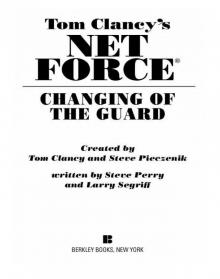 Changing of the Guard
Changing of the Guard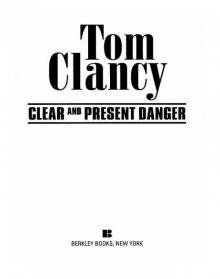 Clear and Present Danger
Clear and Present Danger Hounds of Rome
Hounds of Rome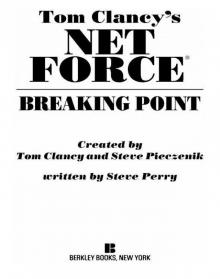 Breaking Point
Breaking Point Tom Clancy's Jack Ryan Books 7-12
Tom Clancy's Jack Ryan Books 7-12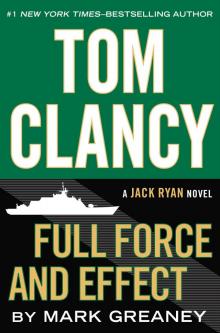 Full Force and Effect
Full Force and Effect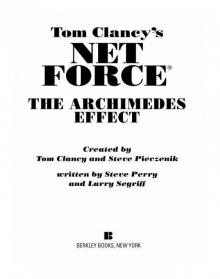 The Archimedes Effect
The Archimedes Effect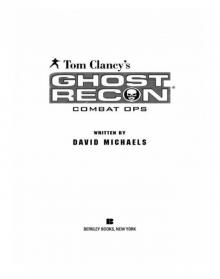 Combat Ops
Combat Ops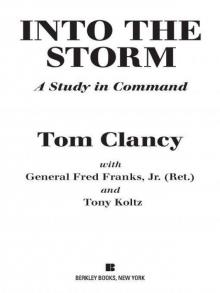 Into the Storm: On the Ground in Iraq
Into the Storm: On the Ground in Iraq Under Fire
Under Fire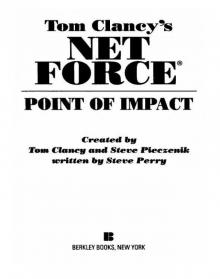 Point of Impact
Point of Impact Red Rabbit
Red Rabbit Rainbow Six
Rainbow Six The Hunt for Red October
The Hunt for Red October The Teeth of the Tiger
The Teeth of the Tiger Conviction (2009)
Conviction (2009)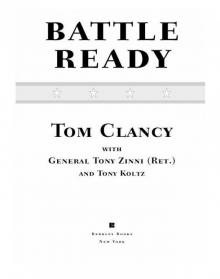 Battle Ready
Battle Ready Patriot Games
Patriot Games The Sum of All Fears
The Sum of All Fears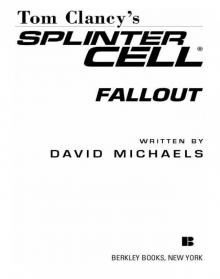 Fallout (2007)
Fallout (2007) Red Storm Rising
Red Storm Rising The Cardinal of the Kremlin
The Cardinal of the Kremlin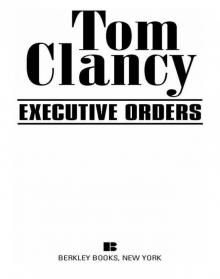 Executive Orders
Executive Orders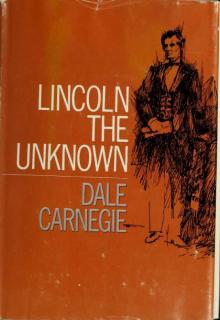 Lincoln, the unknown
Lincoln, the unknown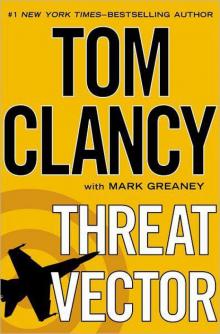 Threat Vector
Threat Vector The Hunted
The Hunted Shadow Warriors: Inside the Special Forces
Shadow Warriors: Inside the Special Forces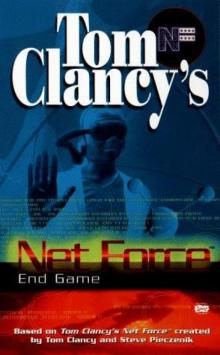 End Game
End Game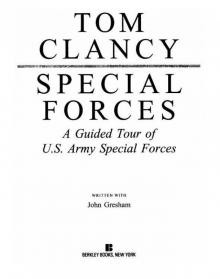 Special Forces: A Guided Tour of U.S. Army Special Forces
Special Forces: A Guided Tour of U.S. Army Special Forces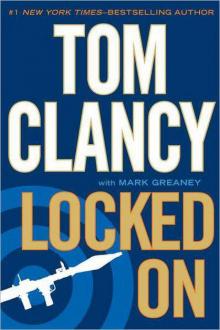 Locked On
Locked On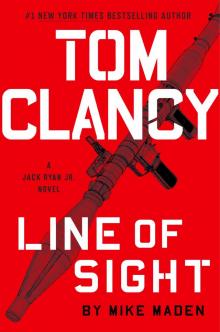 Line of Sight
Line of Sight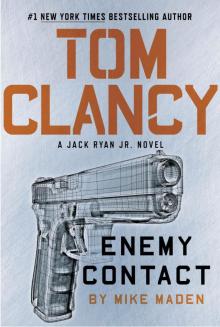 Tom Clancy Enemy Contact - Mike Maden
Tom Clancy Enemy Contact - Mike Maden Fighter Wing: A Guided Tour of an Air Force Combat Wing
Fighter Wing: A Guided Tour of an Air Force Combat Wing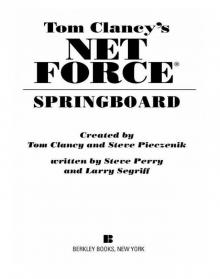 Springboard
Springboard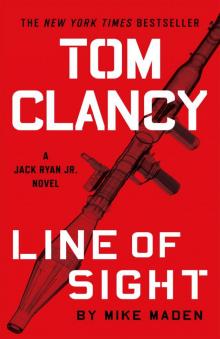 Line of Sight - Mike Maden
Line of Sight - Mike Maden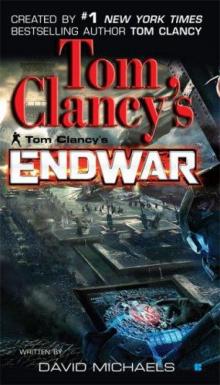 EndWar
EndWar Dead or Alive
Dead or Alive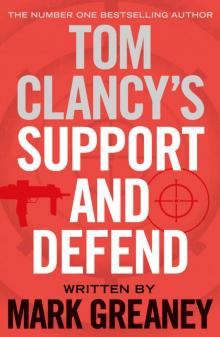 Tom Clancy Support and Defend
Tom Clancy Support and Defend Checkmate
Checkmate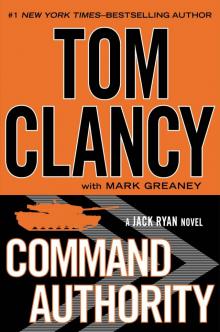 Command Authority
Command Authority Carrier: A Guided Tour of an Aircraft Carrier
Carrier: A Guided Tour of an Aircraft Carrier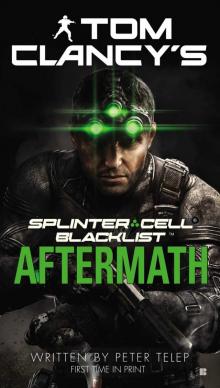 Blacklist Aftermath
Blacklist Aftermath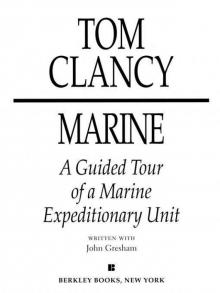 Marine: A Guided Tour of a Marine Expeditionary Unit
Marine: A Guided Tour of a Marine Expeditionary Unit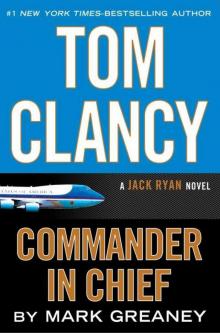 Commander-In-Chief
Commander-In-Chief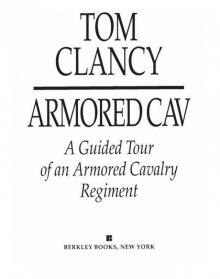 Armored Cav: A Guided Tour of an Armored Cavalry Regiment
Armored Cav: A Guided Tour of an Armored Cavalry Regiment Tom Clancy's Jack Ryan Books 1-6
Tom Clancy's Jack Ryan Books 1-6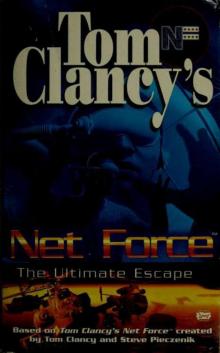 The Ultimate Escape
The Ultimate Escape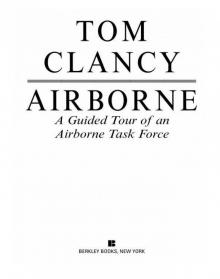 Airborne: A Guided Tour of an Airborne Task Force
Airborne: A Guided Tour of an Airborne Task Force Debt of Honor
Debt of Honor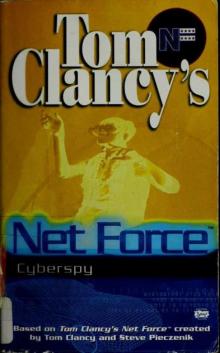 Cyberspy
Cyberspy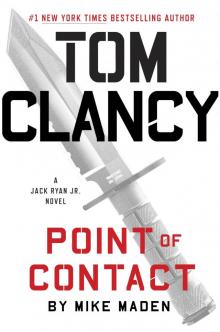 Point of Contact
Point of Contact Operation Barracuda (2005)
Operation Barracuda (2005)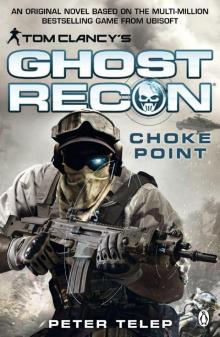 Choke Point
Choke Point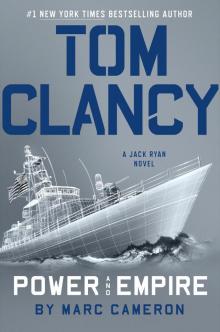 Power and Empire
Power and Empire Every Man a Tiger: The Gulf War Air Campaign
Every Man a Tiger: The Gulf War Air Campaign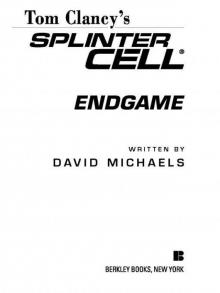 Endgame (1998)
Endgame (1998)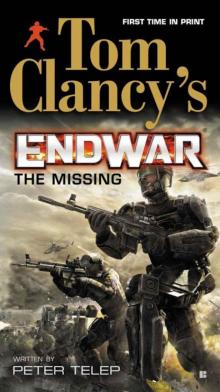 EndWar: The Missing
EndWar: The Missing Splinter Cell (2004)
Splinter Cell (2004) The Great Race
The Great Race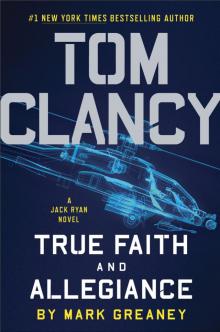 True Faith and Allegiance
True Faith and Allegiance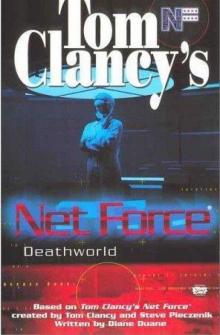 Deathworld
Deathworld Ghost Recon (2008)
Ghost Recon (2008)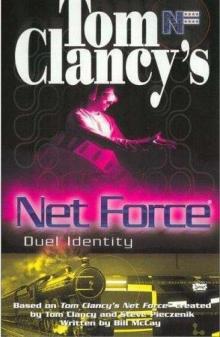 Duel Identity
Duel Identity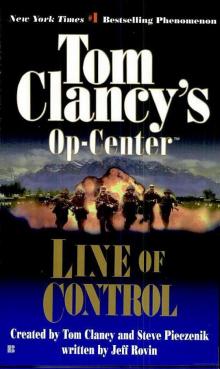 Line of Control o-8
Line of Control o-8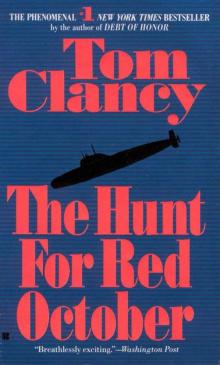 The Hunt for Red October jr-3
The Hunt for Red October jr-3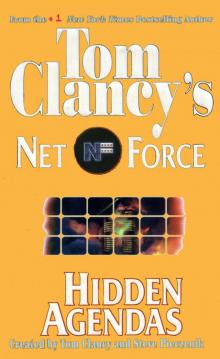 Hidden Agendas nf-2
Hidden Agendas nf-2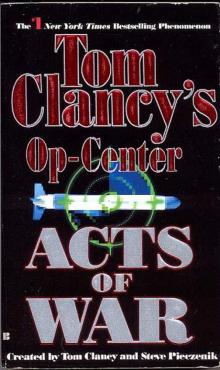 Acts of War oc-4
Acts of War oc-4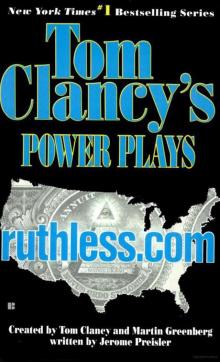 Ruthless.Com pp-2
Ruthless.Com pp-2 Night Moves
Night Moves The Hounds of Rome - Mystery of a Fugitive Priest
The Hounds of Rome - Mystery of a Fugitive Priest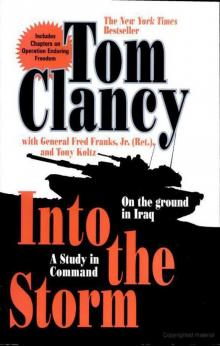 Into the Storm: On the Ground in Iraq sic-1
Into the Storm: On the Ground in Iraq sic-1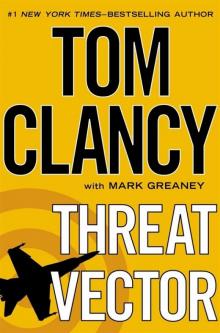 Threat Vector jrj-4
Threat Vector jrj-4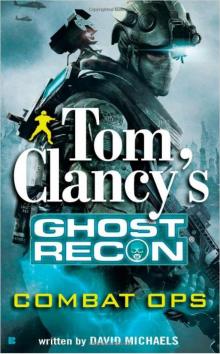 Combat Ops gr-2
Combat Ops gr-2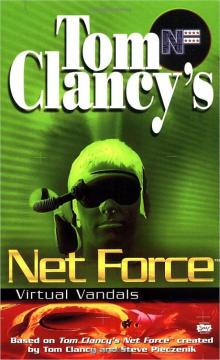 Virtual Vandals nfe-1
Virtual Vandals nfe-1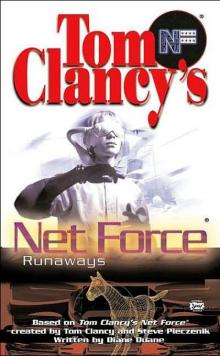 Runaways nfe-16
Runaways nfe-16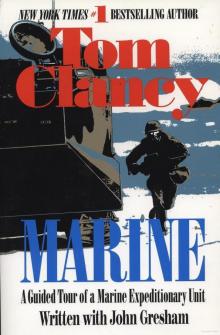 Marine: A Guided Tour of a Marine Expeditionary Unit tcml-4
Marine: A Guided Tour of a Marine Expeditionary Unit tcml-4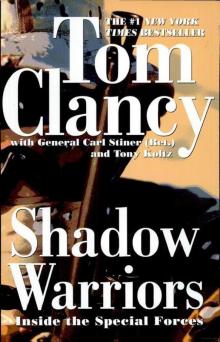 Shadow Warriors: Inside the Special Forces sic-3
Shadow Warriors: Inside the Special Forces sic-3 Jack Ryan Books 1-6
Jack Ryan Books 1-6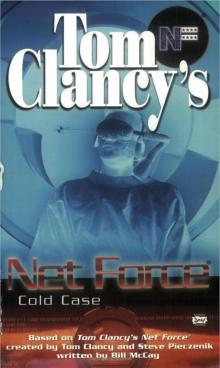 Cold Case nfe-15
Cold Case nfe-15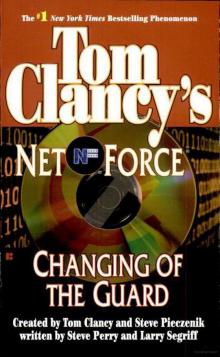 Changing of the Guard nf-8
Changing of the Guard nf-8 Splinter Cell sc-1
Splinter Cell sc-1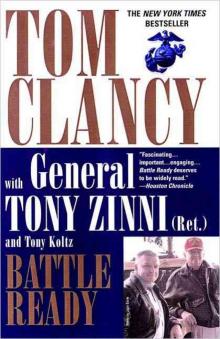 Battle Ready sic-4
Battle Ready sic-4 The Bear and the Dragon jrao-11
The Bear and the Dragon jrao-11 Fighter Wing: A Guided Tour of an Air Force Combat Wing tcml-3
Fighter Wing: A Guided Tour of an Air Force Combat Wing tcml-3 Patriot Games jr-1
Patriot Games jr-1 Jack Ryan Books 7-12
Jack Ryan Books 7-12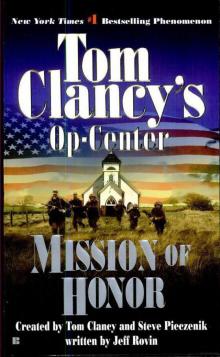 Mission of Honor o-9
Mission of Honor o-9 Private Lives nfe-9
Private Lives nfe-9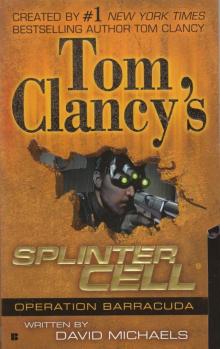 Operation Barracuda sc-2
Operation Barracuda sc-2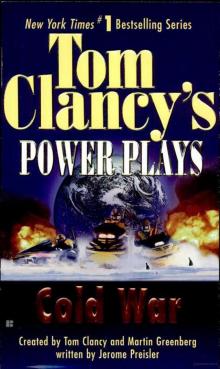 Cold War pp-5
Cold War pp-5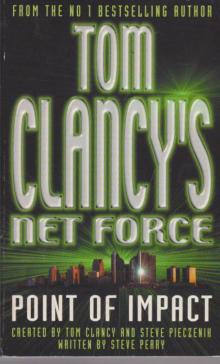 Point of Impact nf-5
Point of Impact nf-5 Red Rabbit jr-9
Red Rabbit jr-9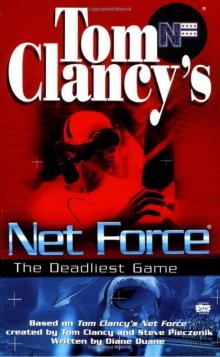 The Deadliest Game nfe-2
The Deadliest Game nfe-2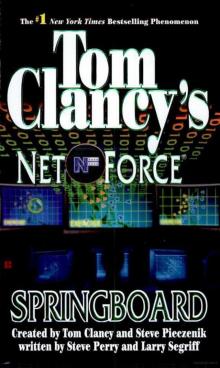 Springboard nf-9
Springboard nf-9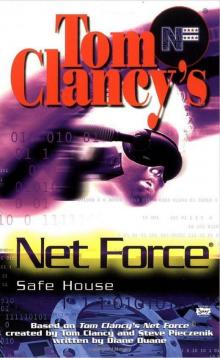 Safe House nfe-10
Safe House nfe-10 EndWar e-1
EndWar e-1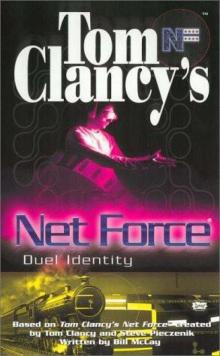 Duel Identity nfe-12
Duel Identity nfe-12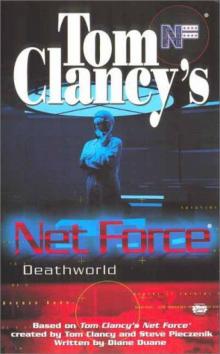 Deathworld nfe-13
Deathworld nfe-13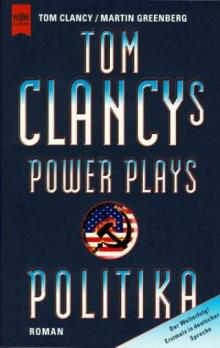 Politika pp-1
Politika pp-1 Rainbow Six jr-9
Rainbow Six jr-9 Tom Clancy's Power Plays 1 - 4
Tom Clancy's Power Plays 1 - 4 Endgame sc-6
Endgame sc-6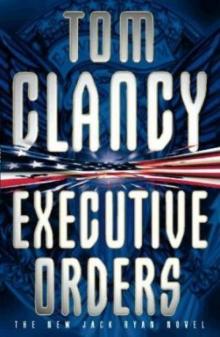 Executive Orders jr-7
Executive Orders jr-7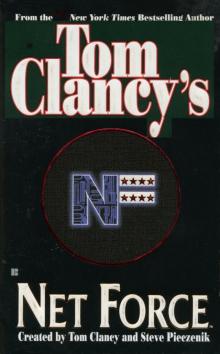 Net Force nf-1
Net Force nf-1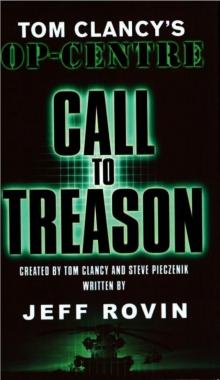 Call to Treason o-11
Call to Treason o-11 Locked On jrj-3
Locked On jrj-3 Against All Enemies
Against All Enemies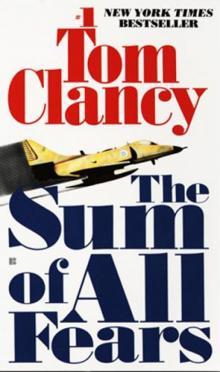 The Sum of All Fears jr-7
The Sum of All Fears jr-7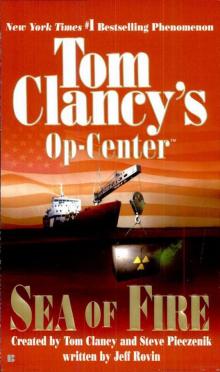 Sea of Fire o-10
Sea of Fire o-10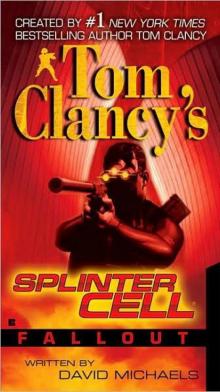 Fallout sc-4
Fallout sc-4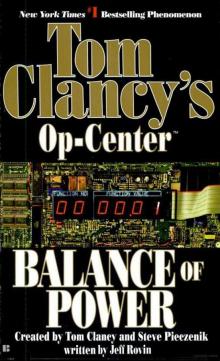 Balance of Power o-5
Balance of Power o-5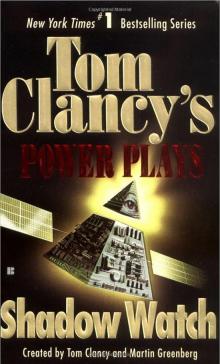 Shadow Watch pp-3
Shadow Watch pp-3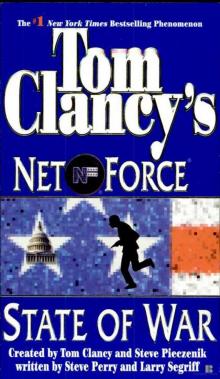 State of War nf-7
State of War nf-7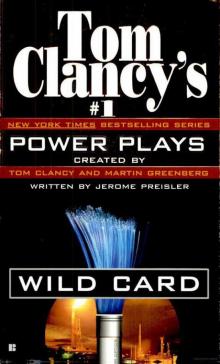 Wild Card pp-8
Wild Card pp-8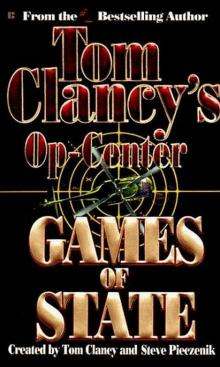 Games of State o-3
Games of State o-3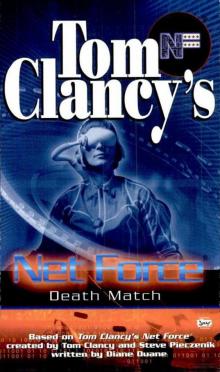 Death Match nfe-18
Death Match nfe-18 Against All Enemies mm-1
Against All Enemies mm-1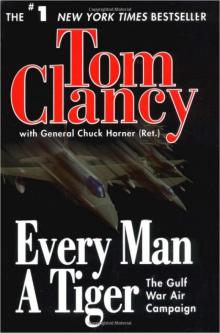 Every Man a Tiger: The Gulf War Air Campaign sic-2
Every Man a Tiger: The Gulf War Air Campaign sic-2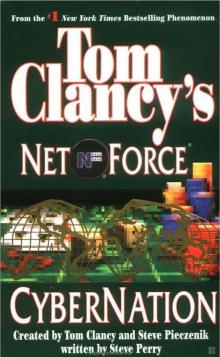 Cybernation nf-6
Cybernation nf-6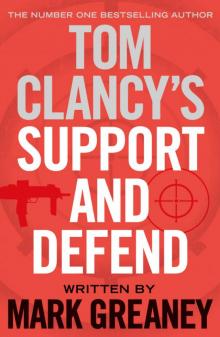 Support and Defend
Support and Defend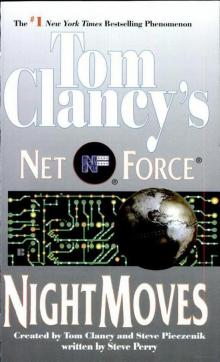 Night Moves nf-3
Night Moves nf-3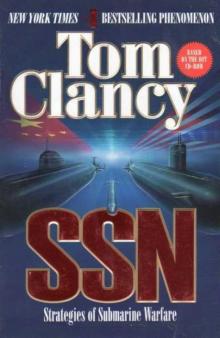 SSN
SSN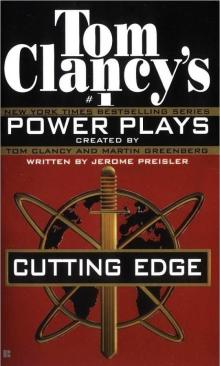 Cutting Edge pp-6
Cutting Edge pp-6 The Cardinal of the Kremlin jrao-5
The Cardinal of the Kremlin jrao-5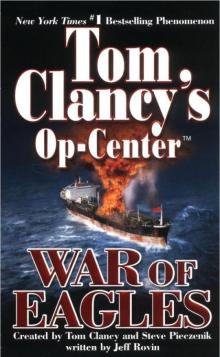 War of Eagles o-12
War of Eagles o-12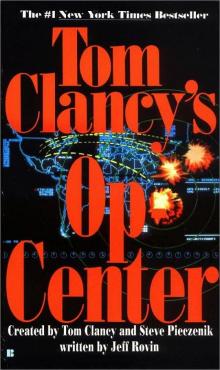 Op-Center o-1
Op-Center o-1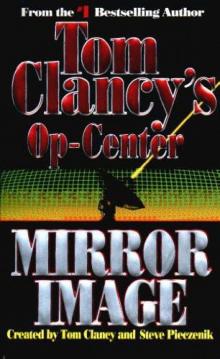 Mirror Image o-2
Mirror Image o-2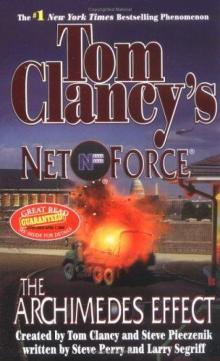 The Archimedes Effect nf-10
The Archimedes Effect nf-10 Teeth of the Tiger jrj-1
Teeth of the Tiger jrj-1 Bio-Strike pp-4
Bio-Strike pp-4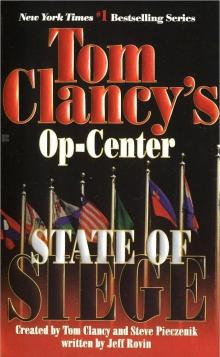 State of Siege o-6
State of Siege o-6 Debt of Honor jr-6
Debt of Honor jr-6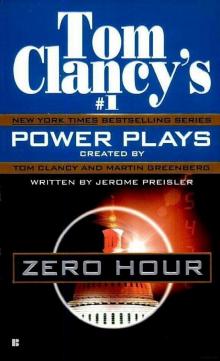 Zero Hour pp-7
Zero Hour pp-7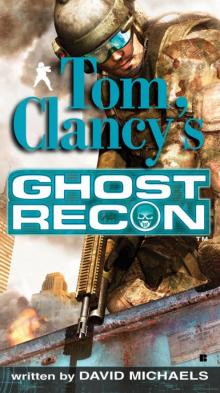 Ghost Recon gr-1
Ghost Recon gr-1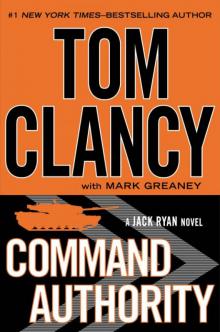 Command Authority jr-10
Command Authority jr-10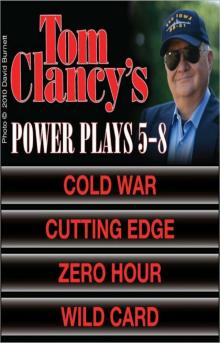 Tom Clancy's Power Plays 5 - 8
Tom Clancy's Power Plays 5 - 8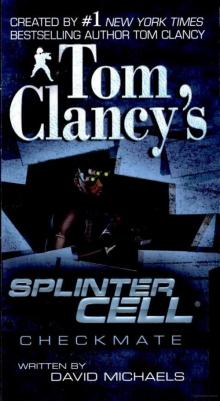 Checkmate sc-3
Checkmate sc-3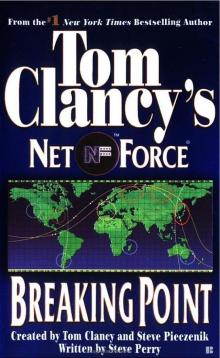 Breaking Point nf-4
Breaking Point nf-4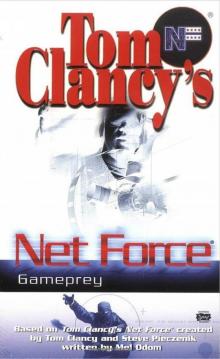 Gameprey nfe-11
Gameprey nfe-11 The Hunted e-2
The Hunted e-2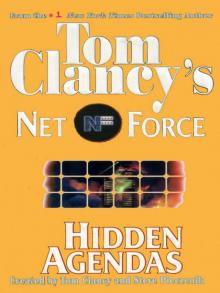 Hidden Agendas
Hidden Agendas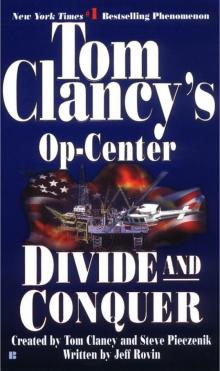 Divide and Conquer o-7
Divide and Conquer o-7